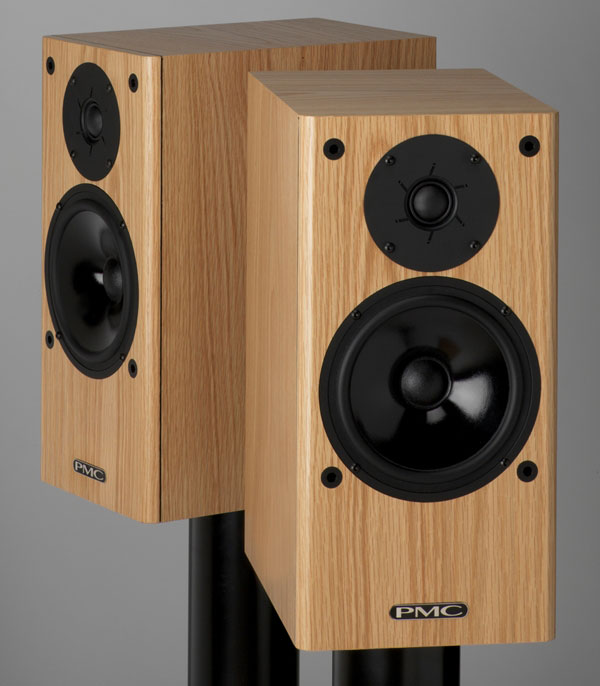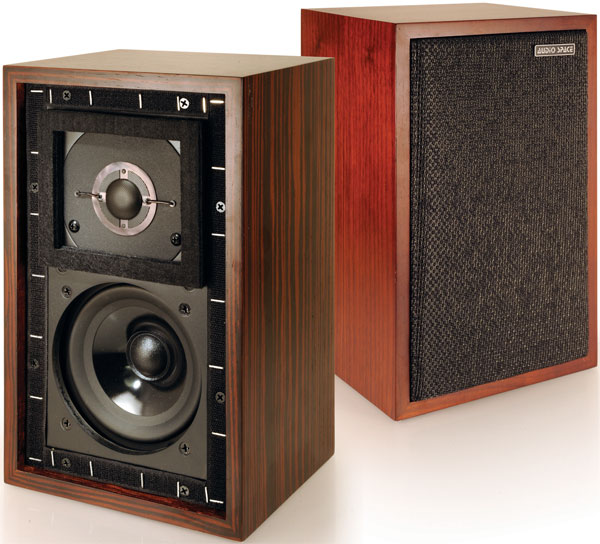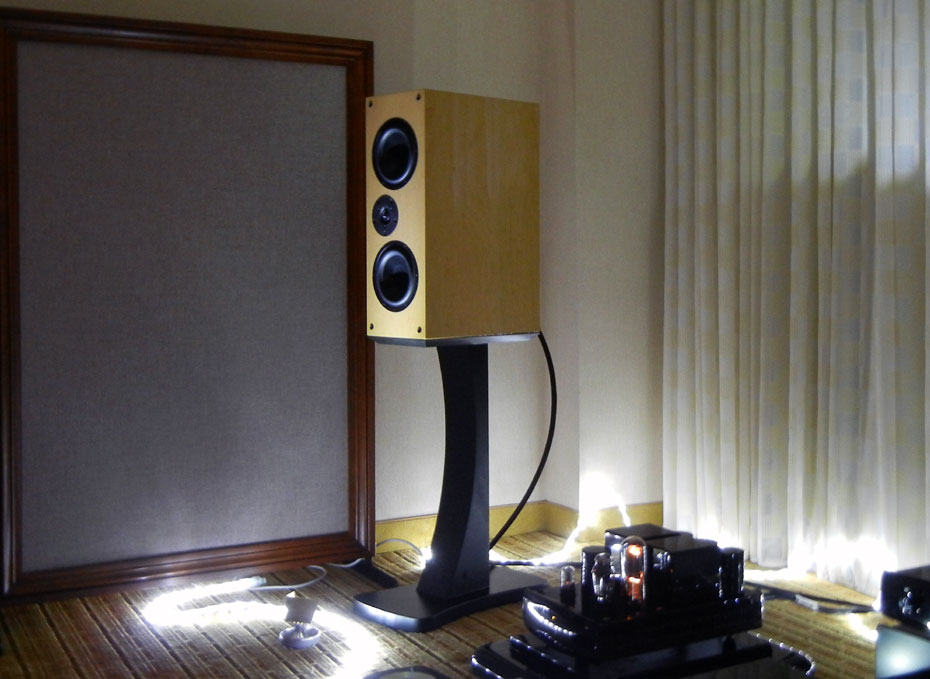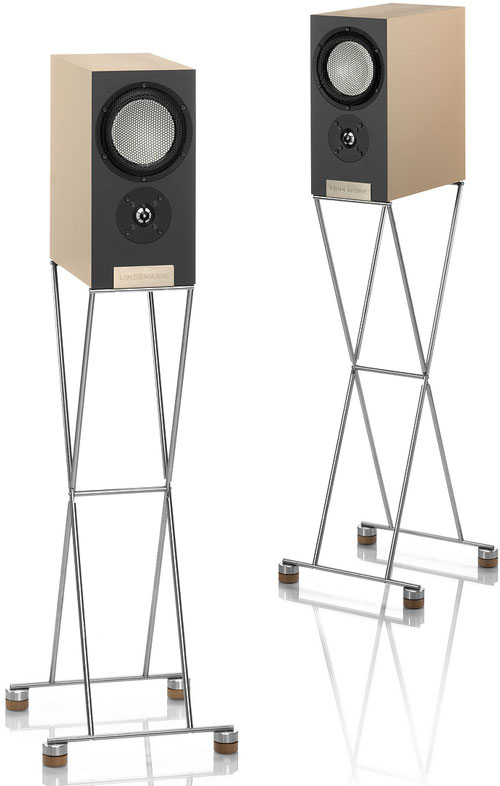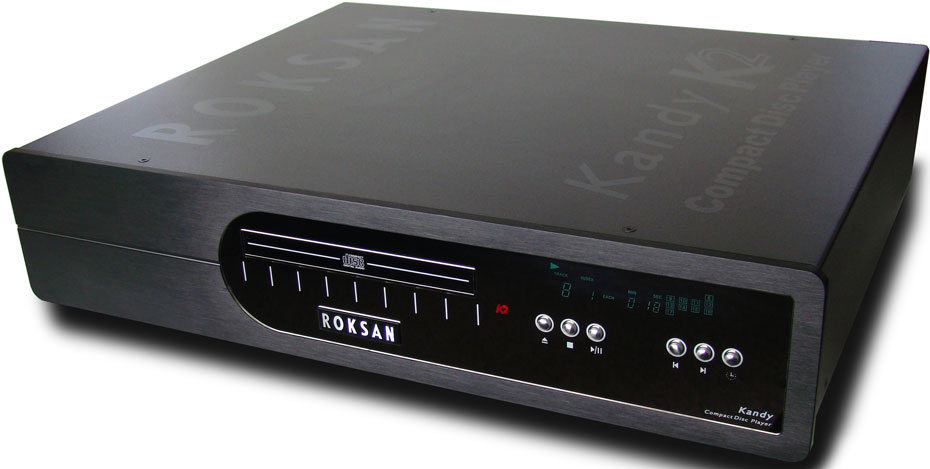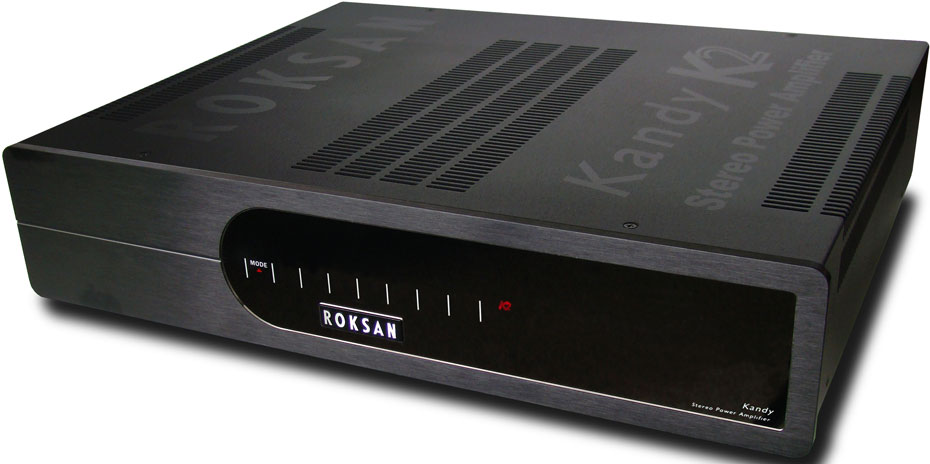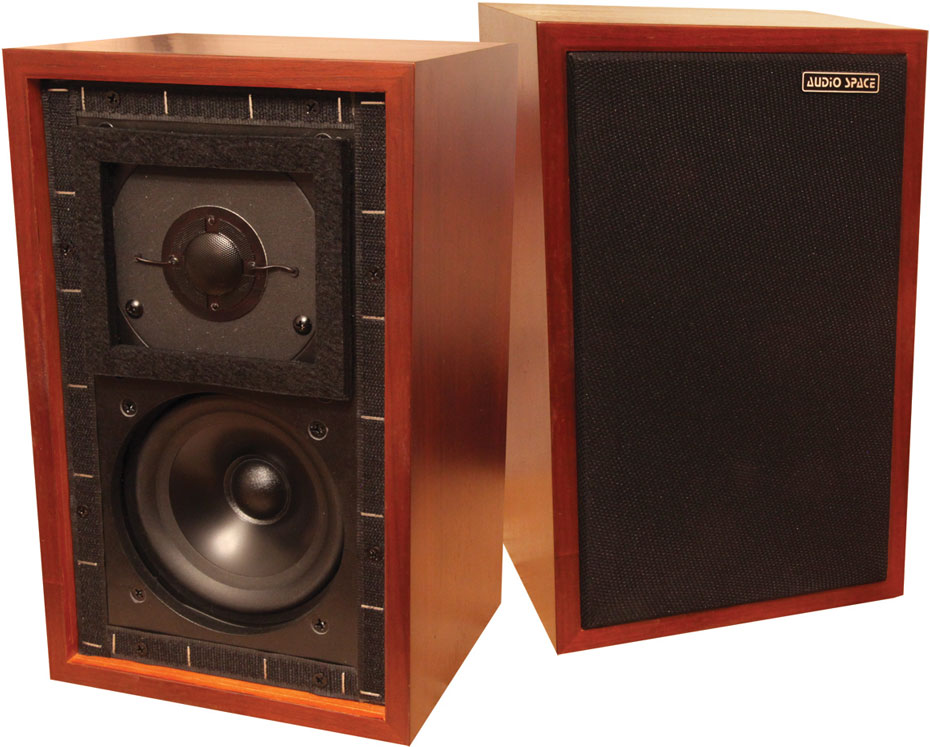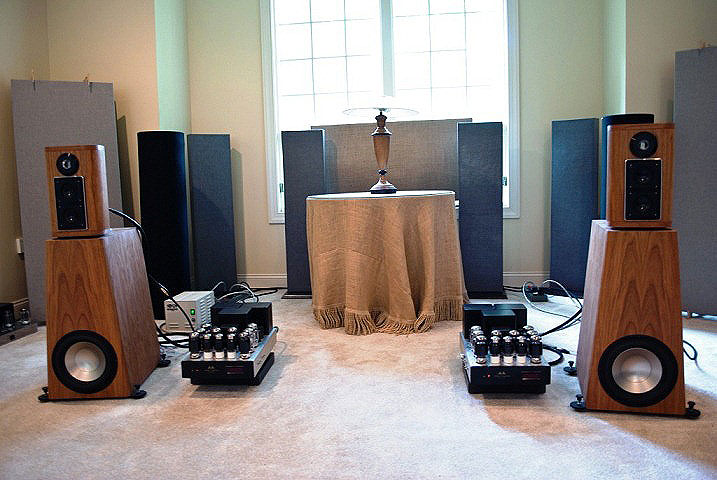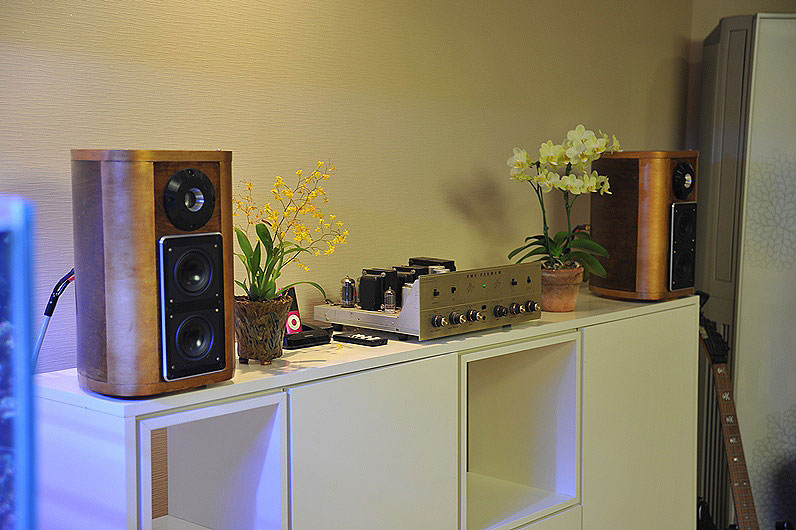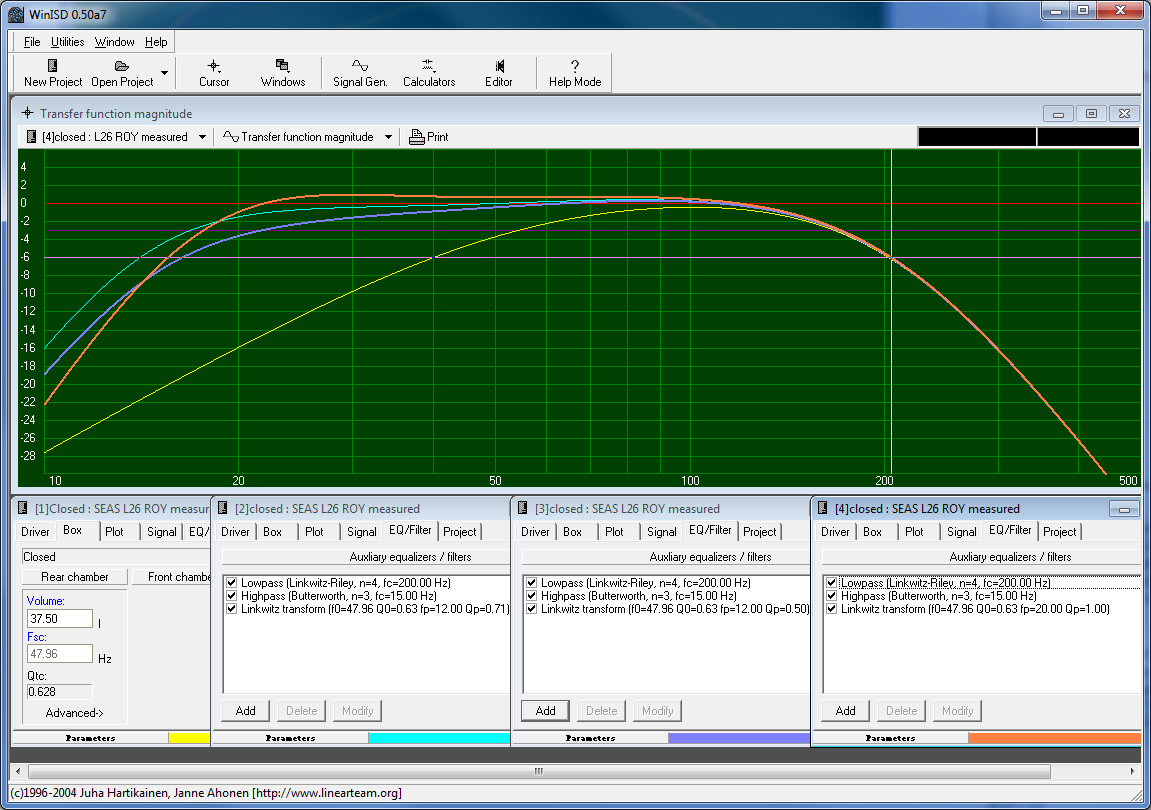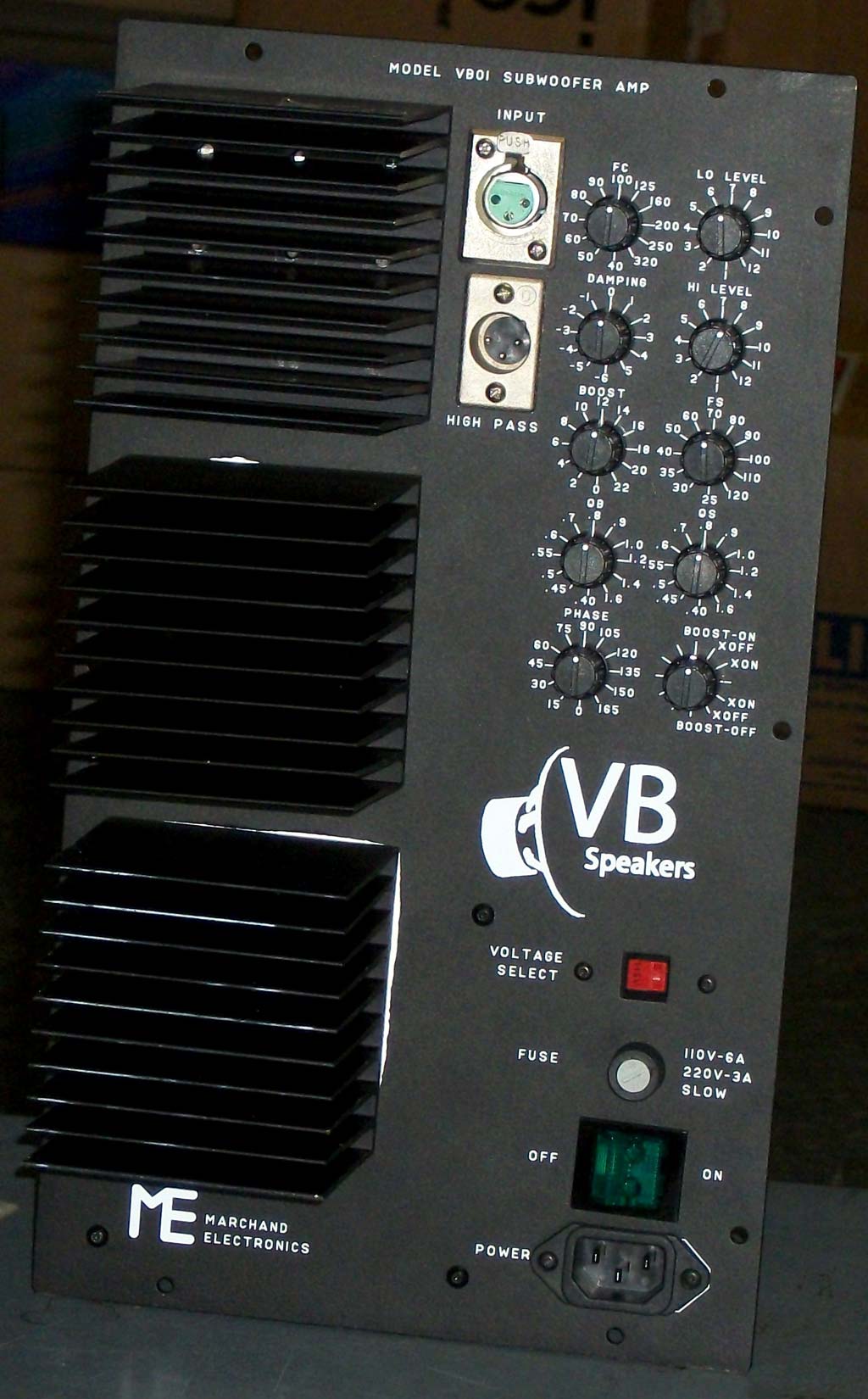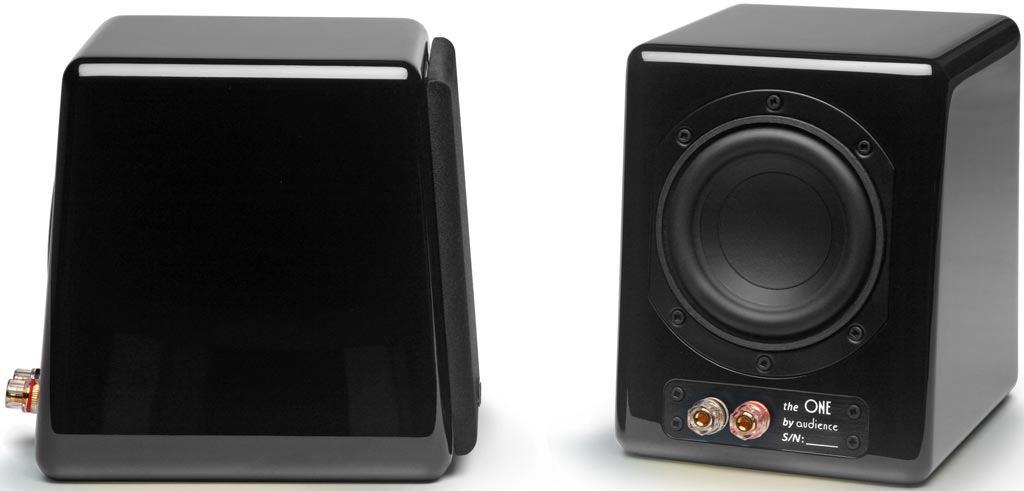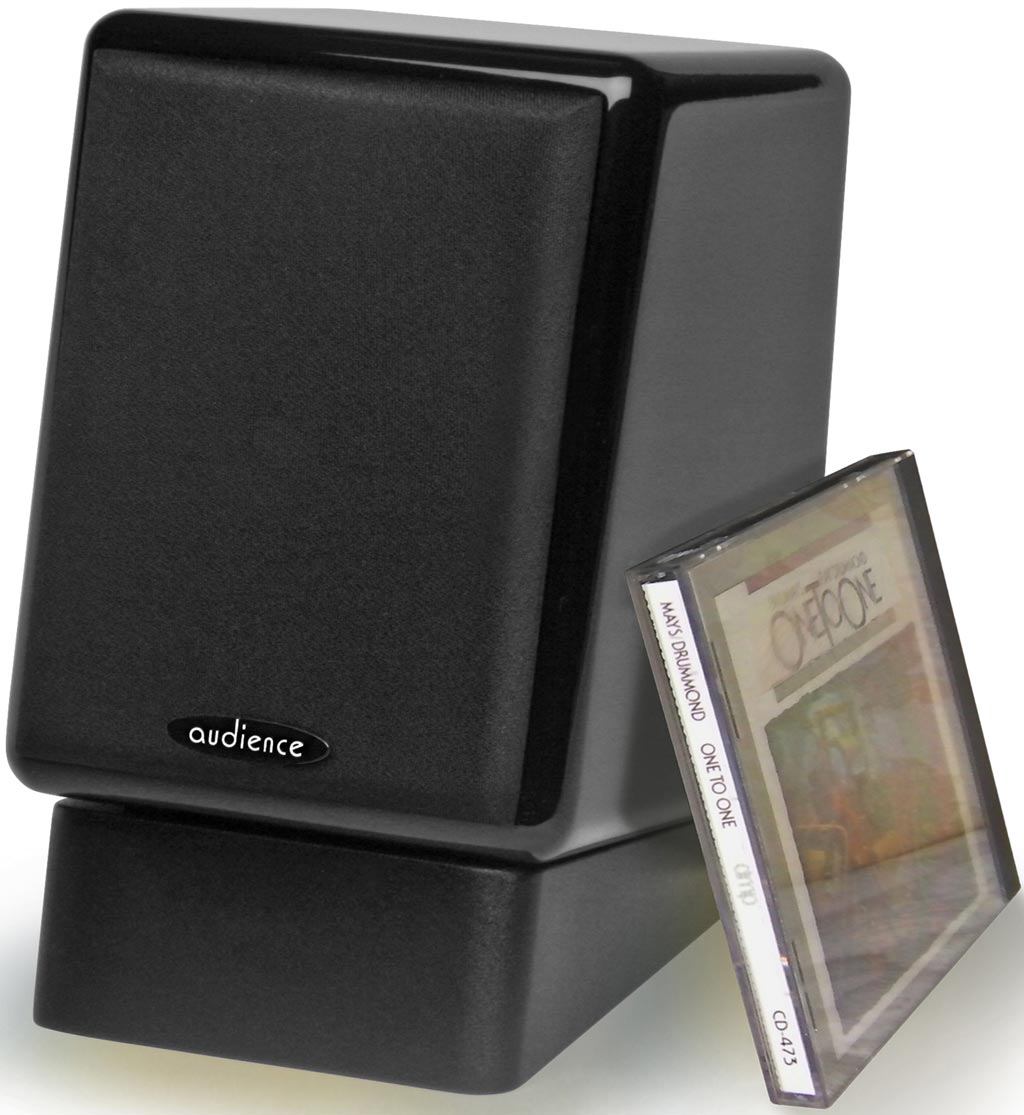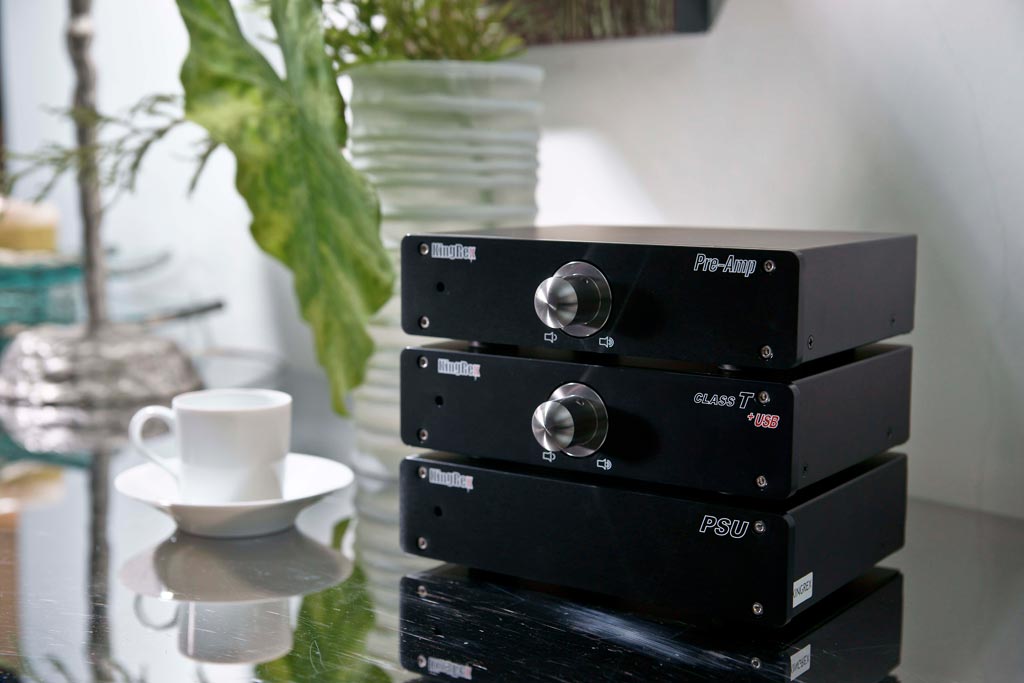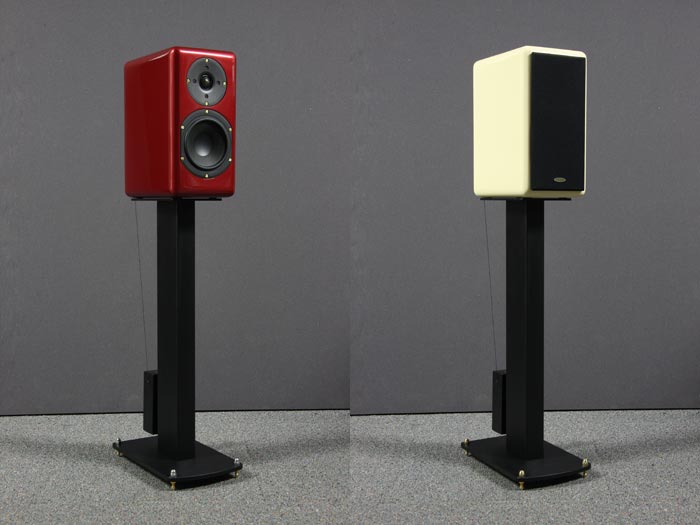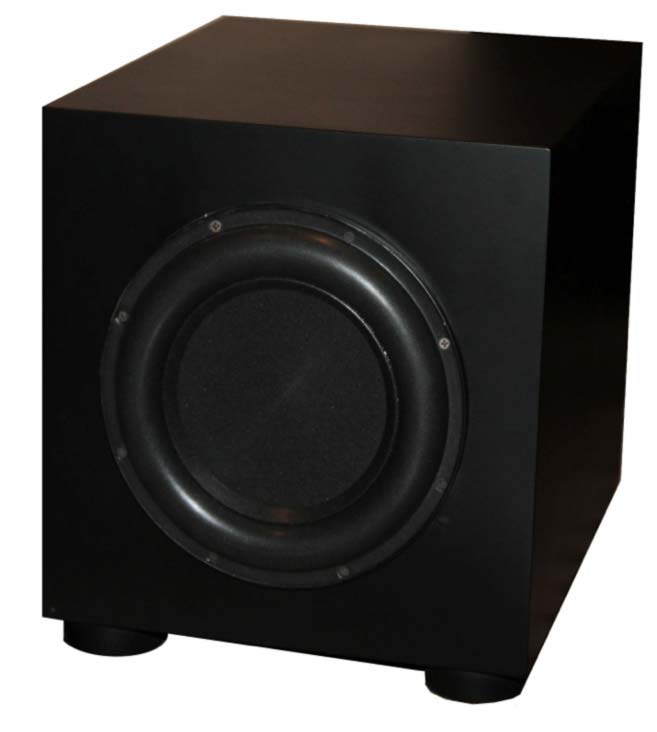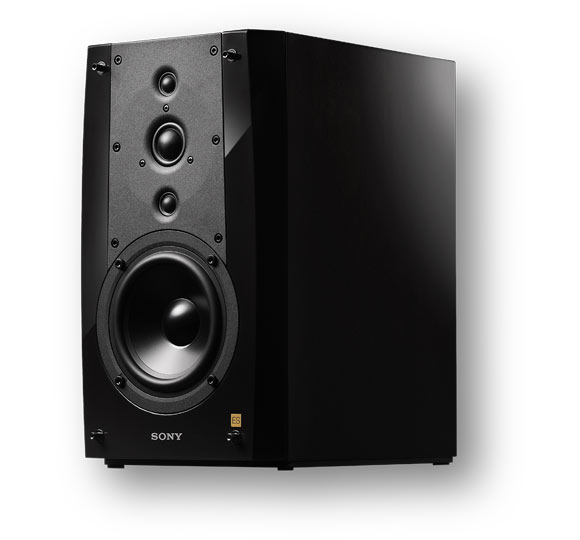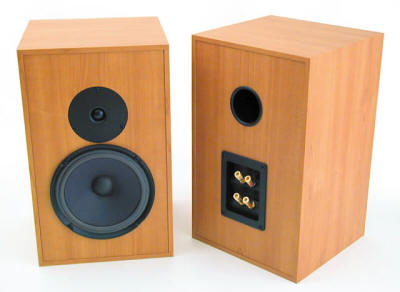 It isn’t often one gets to review a nearly complete system and I jumped at the opportunity to do so, and there is good reason. Reviewing a single component, a speaker, a CD Player, an amplifier, etc. involves certain guess work, and that magic touch it brings to one system might not appear in another. But with a complete system, where the synergy of the components has been worked out by a single manufacturer, basically all that is left is the room and the sound. A complete system takes so many variables out of the equation, narrowing the reviewer/consumer equipment gap, that there is really a good argument to be made for only purchasing a complete system. Especially if you love great music but don’t have the time to test out 20 or 30 different components and all the combinations that could possibly be created out of them. Sometimes easy street is just perfect place to go.
It isn’t often one gets to review a nearly complete system and I jumped at the opportunity to do so, and there is good reason. Reviewing a single component, a speaker, a CD Player, an amplifier, etc. involves certain guess work, and that magic touch it brings to one system might not appear in another. But with a complete system, where the synergy of the components has been worked out by a single manufacturer, basically all that is left is the room and the sound. A complete system takes so many variables out of the equation, narrowing the reviewer/consumer equipment gap, that there is really a good argument to be made for only purchasing a complete system. Especially if you love great music but don’t have the time to test out 20 or 30 different components and all the combinations that could possibly be created out of them. Sometimes easy street is just perfect place to go.
The Prelude Line from Electrocompaniet consists of the PSB-1 bookshelf speakers, the PSF-1 Floorstanding speakers, the PI-1 50-watt amplifier, the PI-2 100-watt amplifier, the PC-1 CD player and the Maestro integrated home entertainment system. System provided for this review included the PC-1 CD Player, the PI-2 amplifier and the PSB-1 bookshelf speakers.
In this review of the PC-1, PI-2 and PSB-1 components of the Prelude Line, I plan to give you a general overview of my impression of the system as a whole, and then each component individually integrated with other components from different manufactures I’ve had access to during the duration of this review. Firstly though I’ll give you a bit of information about the listening space the Prelude Line was reviewed in and the music styles I exposed it to. After that I’ll get into the sound of the system and individual components.
If you are unfamiliar with Electrocompaniet, it is a Norwegian company that has been around since the earlier 70’s. Their first breakthrough component was “The 2 Channel Audio Amplifier” that was transient intermodulation distortion free. Based on a 1973 paper by Dr. Matti Otala, Electrocompaniet’s first 2×25 was hailed as “the world’s best sounding amplifier” by the Audio Critic in 1976. I have to admit, I wasn’t even born yet. But it is nice to know my ears are in capable hands.
Room/Music Style:
I set up the Prelude system in my living room which, with the wife’s approval, has been converted to our listening room and my office. The room is roughly 22 feet long and 15 feet wide with 8.5 feet ceiling. There are four large windows, two along the right 22 feet length and one on each 15 feet width. There is a large opening in one wall that leads to the kitchen. The home is classic California Bungalow style that has been rehabbed. There is a raised stone foundation with recently redone framing, floors and drywall. I set up the speakers on a tipped over Ikea Lack shelving unit with 3-inch raised feet. The left and right internals shelves are packed with many of my heaviest books to give the stand weight and vibration resistant stability. And to give the appearance I read books, went to school, and have a functional brain in this cavity above my neck. The center internal shelf is left open for component placement.
The PSB-1 speakers, themselves a hefty weight, were set on the top of the tipped over Lack about 3 inches in from each end and at the most forward position to be flush with the Lack’s face. I sat on a large leather couch at about the same distance away as the speakers are apart, about 64 inches. So a fairly near-field listening experience, which is how I tend to like it. The speakers were about 34 inches from the back wall and 30 inches from the side walls. I experimented with some placement a few inches back or in closer together, but that either led to muddy bass or a compressed soundstage.
Both side walls have first reflection dampening material from floor to ceiling spanning about 6 feet in width. 3 feet in front and back of the first reflection point is found with a mirror. There is also material on the rear wall with sound abortion material in the corners directly rear of the speakers to their left and right. The room isn’t sonically neutral; it is a living, working, changing room. I’ve done the best I can to reduce sonic interference when one is sitting in the best listening position.
I listen to a wide variety of music ranging from trance, trip-hop, metal, classic rock, jazz, blues, classical and even some country. Variety is the spice of my life, and I think that helps give you, the reader, a more rounded impression of the speakers as well. If I think a system does significantly well with a particular style of music, I’ll let you know. Conversely, if it can’t muster the needs of other styles, I’ll point that out. But really, you should know, finding a system that fits your needs is your job. Reviews can only point you in directions, but your ears, brain, and time spent auditioning different systems is how you learn what you like. So I urge you, even if you aren’t ever sure about something, never pass up a chance to listen to any system out there. But I believe you should actually find the time to audition the Prelude Line from Electrocompaniet, there is something special going on here.
The Prelude Line: PSB-1 Bookshelf Speakers | PC-1 CD Player | PI-2 Integrated Amplifier
The Prelude Line keeps a similar component design and feel to Electrocompanient’s higher-end Classic Line. Smooth faced and low profile rectangles with a round silver power button on the left and four round silver buttons in a diamond shape on the right. These are to access selections of functions of each component. Functions like PAUSE, FAST FORWARD are accessed via the remote. There is a VFD-digital display in the center using a light blue retro type face. Not too bright in a dark room. Each unit comes with the same generic and somewhat confusing remote. I’m not a remote whiz, I haven’t had a TV and the obligatory even more complex remotes in about 10 years, so I’m a bit of a remote noob. But Electrocompaniet is developing its own proprietary remote. I look forward to seeing what they come up with, although it doesn’t appear to be an iPhone/SmartPhone remote in the works, which is too bad. I think the slick design and modern feel of the components could only benefit from a smart phone remote application.
The PC-1 and PI-2 units are constructed well and have good heft to their weight. They are both 16 inches wide, 12 inches deep and 2 inches tall. The system can get a bit warm after some use at higher volumes. And if you live in hot weather the system can even get slightly hot, but nothing near burning-your-skin levels. The PC-1 CD Player has balanced XLR and single-ended interconnection options. The PI-2 integrated amplifier has 2×2 fully balanced XLR and 2×2 single-ended connections. I ran my P3/24 and Moon LP3 through a set of the single-ended connections with Granite Audio #470 interconnects, and in between the PC-1 and PI-2 I used the supplied foot-long XLR cables from Electrocompaniet. I did try the Granite Audio #470 in between the PC-1 and PI-2 at first. After switching to the fully balanced XLR cables there was a noticeable volume gain, but that was about all I noticed. Obviously different interconnects will change the sound of the system. Electrocompaniet requested I use the XLR cables for the review, keeping in line with the whole synergy thing. Also, neither unit has a headphone adapter.
The PC-1 uses a CD drive, not a DVD as some others have reported, that has been mounted in a new anti-vibration system and it runs very quietly. I can’t hear it at all sitting just a few feet away with the volume down very low. There is no Open button so one has to hold down the STOP button for a couple seconds to load/unload the CD. Hit the PLAY button to make the magic happen. The tray opens and closes quickly after holding down the corresponding buttons for several seconds, but load time to hearing music does seem to lag a little. I counted about 11 seconds after I hit the PLAY button before I hear music out the system.
The data from the CD is processed through a 24bit/192kHz DAC from Cirrus Logic and is run in a fully balanced class A output stage. The 16bit of the CD is up converted to 24bit. I didn’t have any issue with any normal or burned CD I put in, but trying to get some of the other formats that are listed on the Electrocompaniet website to play was frustrating and ended up just wasting CDRs. What is an MP3-DVD anyways…. Seriously, I Googled it and came up with nothing much. I didn’t test the regular MP3 functionality of the system because it would be such a shame to run that junk through such a wonderful set up. So redbook, burned, and hybrid SACDs it was. The player also did a good job reading some fairly scratched disc.
The PI-2 is a 100-watt into 8 Ohms, integrated solid-state amplifier that looks almost identical to the PC-1 CD Player. The four round, small, silver buttons access all the functionality you’ll need. The vertical ones controlling the VOLUME, a digital volume control, the same used in the EC4.7/EC4.8 preamplifiers. It seems it typically does two notches up and one notch down when just quickly pressing the buttons. I never found out how high the volume went, but it started at 0 and continued on past 100, but my ears didn’t want to find out how far past it went. Let’s just say it can get ‘neighborly pissing off’ loud. The horizontal two buttons control INPUT SELECTION. CD, Tuner, Aux, and HTV (buttons not all found in a row on remote).
My only complaint about either unit is that the binding post on the PI-2 are kind of cheap-feeling and -looking for a amplifier costing $3,250. They do get the job done and were selected to meet cost vs. E.U. requirements. They are gold plated and accept un-terminated wire, spade or banana terminations.
The PSB-1 bookshelf speakers are small, heavy, made of 18mm thick MDF, and have a finger print-exposing glossy piano black finish. They are fairly nice looking in a simple, no BS, way. There are four binding post on the back to accept bi-wiring or bi-amping. Electrocompaniet uses a modified Scanspeak 25mm (1-inch) silk dome tweeter and a 162.5mm (6.5-inch) coated paper cone woofer. The cabinet is standing bass reflex design and has a port in the rear to augment bass response. The tweeter has ventilated magnet system and damped rear chamber. This is to ensure minimum compression of the top-end. And frankly I think it works.
Electrocompaniet has phased optimized the crossovers to ensure a large soundstage that sounds coherent and solid. The drivers have the same absolute acoustic phase at the crossover frequency between the midrange and the tweeter without any inverted phase of the drive units to give realistic music experience possible at this price point. I found the speakers very easy to place and sounded good at just left and right of the sweet spot.
System Sound
I sat there the first night of hearing this system, completely slouched out in my couch, ears just below the mid-level of the tweeter, legs completely tense as the waves of Pink Floyd’s Wish You Where Here washed over me. I was going to be late to pick my wife up from her class. I needed to be there at 9:15pm and it was already 9, I didn’t want to leave the couch. Just as the relaxed, almost after glow last section, of the album was starting to fade in. Damn, this was the first time I have been caught, well first time in a long time I’ve been caught, between responsibility and music. I wasn’t too sure which one to pick. I was almost sweating from emotional intensity of that resounding audio ride. I didn’t want it to finish early; then again I didn’t want to sleep on the couch…
Why, what was it, the system or the music, the speakers or the amplifier, the combination or everything? Was it because I was using the PS Audio PrefectWave AC5 instead of the AC3, or was it just that moment? I had to know. This system has a great emotional pull and I want to know why. Now at this point, three months later, I can point to two factors that contributed to that captivating night, the Scanspeak tweeter in the PSB-1 and the overall quality and synergy of the Prelude system.
Analytically the best way to describe sound produced from the Prelude system is, slightly rolled off highs at the top-end of the frequency spectrum, the treble and mids in general are a bit louder than the lows, and the sound boarderlines on analog smoothness. The treble and mids are silky and clear. But the clarity and thump of the bottom-end leaves a little to be desired. They are pretty small bookshelf speakers, so the slight lack of bottom-end punch, at least in my mid sized room, isn’t too surprising. Those are the facts of the system as I have heard them in my listening room. Regardless, many nights I found myself locked in a trance, sucked into the sound of the system. I’ve yet to hear something similarly engaging without having to cut off a leg to afford it.
PC-1 CD player:
After a couple months of just listening to the Prelude system, I decided to start switching in other components to find out where the emotional pull of the system was coming from. What component held the golden ticket to my heart?
By itself, the PC-1 CD player does a good job of giving you what is on the disc. Plus the player is super quiet sonically, though it is affected by what is powering it. I’ve run a couple different power cables into it and found it is susceptible to interference. I’ve heard soundstage and dynamics greatly reduced when using standard or iffy power cables. I generally ran it with the PS Audio AC3 or AC5 Perfect Wave power cable and found them to be a good match. Typically the AC 3 into the PC-1 and AC5 into the PI-2 amplifier.
I’ve only had a chance to pair the PC-1 CD player with three other speakers besides the Electrocompaniet PSB-1. With the two others in a system of the PC-1 running through the PI-2 amplifier, the sound is very full range, way up into the high range, fatiguing actually. Especially when using solid copper core speaker cables, but also noticeable with standard copper strand speaker cables as well. This is fine, some folks love hearing all that extra stuff. It is exciting to the ear, but I am happy Electrocompaniet rolls that excitement off in the PSB-1 bookshelf speakers.
PI-2 amplifier:
The PI-2 amplifier might actually be the ‘purist’ jewel of the Prelude components. The sound out of it is natural, revealing, and fast. It was very easy to combine with other components. For instance, if I wanted more mids I would use the PS Audio AC5 to power it. If I wanted more bass and crisper highs than I would use Granite Audio #570 to power it. If I used solid copper core speaker cables into the other speakers I could change CD Players to get a more relaxed sound while keeping slightly louder highs, giving the highs a more solid, less airy quality. The PI-2 didn’t appear to place its own sound above the associated equipment, instead putting out what it takes in, and can be enhanced or restricted based on paired components.
PSB-1 bookshelf speakers:
The Prelude line I reviewed does posses a sweet silky sound, which is very likely the result of the Scanspeak tweeter in the PSB-1.
What that means subjectively is that cymbals and other high frequency sounds are extremely solid and are almost in the room. For instance, when playing the thelonious monk quartet with john coltrane at carnegie hall CD, Shadow Wilson’s cymbals are flat out amazing. They sound robust and solid, metallic and realistic, without being fatiguing. The sound is emotionally captivating. When spinning Jeff Buckley’s version of “Halleluiah” on vinyl, the PSB-1 speakers handle his voice with such firm delicateness and realistic staging that it almost bring out tears. One can hear the roll-off of the highs. On other albums that feature sharper brass, the realistic aggravating sharpness just isn’t there. The result of this roll-off in the highs is a system that one can listen to for hours without experiencing fatigue. So there is a slight trade off in absolute reproduction versus a silky analog-like sound that can be enjoyed for hours on end.
The lows unfortunately are not as stunning as the mids and highs. Though they aren’t bad, they just aren’t in balance with the quality and clarity of the rest of the range. Maybe in a smaller room than mine, or if you are an apartment dweller and don’t want to irk your neighbors, or if you don’t listen to punchy music, this won’t be a concern.
Conclusion
I would advice you to give the Prelude line some demo time if the opportunity arises or you are in the market for some new gear. I think the PI-2 amplifier and the PSB-1 speakers with the tweeters are fantastic and really make the case for the quality of craftsmanship and sound from Electrocompaniet’s entry-level line. Pair the set with the right power cables and room size and you’ll be set for hours of emotionally engaging sound.
My suggestions for Electrocompaniet for future version would be to increase the size and bottom-end clarity of the woofer and come out with that custom remote as quickly as possible.
The post Electrocompaniet PSB-1 Bookshelf Speakers, PC-1 CD Player, PI-2 Integrated Amplifier Review appeared first on Dagogo.
